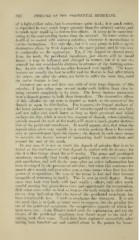Page 952 - My FlipBook
P. 952
962 DISEASES OF THE PERIDENTAL MEMBRANE.
of a light-yellow color, but is sometimes quite dark ; it is much softer,
is deposited in very much larger quantity than the serumal variety, and
is much more rapid in its destructive effects. It seems to be more irri-
tating to the surrounding tissues than the serumal. No tissue retains its
hcdlth if in contact irith salivary calculus ; wherever it accumulates it
carries destruction. Not only this, but it is very prone to follow up its
destructive effects by fresh deposits in the space gained, and in this way
is continually on the aggressive. Yet, if the de^wsit be cleared away
from the teeth, the peridental membrane, just above, will be found
it may be inflamed and changed in texture, but is not de-
intact ; it
stroyed for any considerable distance in advance of the forming calcu-
lus. In this way the teeth are often loosened very rapidly. The lower
incisors are usually the first to suffer and the first to be lost, after which
the others, one after the other, are liable to suffer the same fate, until
the entire denture is lost.
Instances are now and then met with of very large deposits of this
calculus ; I have often seen several molar teeth hidden from view by
being covered completely in by them. The lower incisors sometimes
bear a deposit greater in bulk than themselves. The destructive effects
of this calculus do not seem to depend so much on the amount of the
deposit as upon its distribution. For instance, the lingual surfaces of
the lower incisors may carry a load of calculus equal to their own bulk
and not suffer very much harm so long as their proximal and labial
surfaces are free, while a much less amount of deposit, when extending
entirely around the neck of the tooth, will cause a much greater destruc-
tion of the peridental membrane. It would appear, also, that when the
deposit takes place very rapidly in a certain position there is less tend-
ency to encroachment upon the tissues ; the deposit in such cases seems
to override the tissues instead of insinuatino; itself beneath them and
around the root of the tooth.
In any case, it is not so much the deposit of calculus that is to be
feared as the continuance of that deposit in contact with the tissues; for
this it is that brings about the evil results. The gums and peridental
membrane naturally heal kindly and quickly even after very consider-
able mutilation, and will do the same after an active inflammation has
been developed by the presence of calculus; but when this continues for
month after month and year after year, a time comes when they lose the
power of recuperation : the tone of the tissue is lost and they become
incapable of returning to health. This is seen in every degree. Some
cases that look very badly will heal readily others, only after much
;
careful nursing has given them time and opportunity for recuperation.
Still other cases refuse to heal so long as the teeth remain in their sock-
ets—a clear indication that the tone of the peridental membrane has
been irretrievably lost. I wish to emphasize this statement. It is not
the tooth that is at fludt, as many seem to suppose, but the peculiar tis-
sue of the peridental membrane, the recuperative capacity of which has
been worn out. John Hunter hailed teeth for replantation, and yet the
tissues of the peridental meml)rane were found equal to the task of
uniting with their roots. Teeth have been replanted successfully after
having been knocked out and carried about in the pocket for hours


